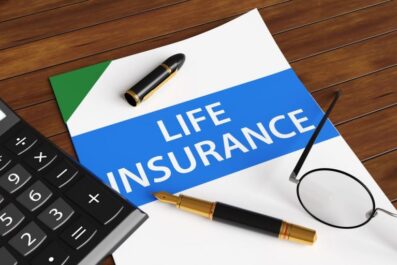What to Do After a Car Accident You Did Not Cause

Considering the sheer size of the U.S., it is no surprise that America is one of the countries with the most road traffic in the world. As of 2021, it is estimated that there are around 284 million vehicles in operation here, with more than 228 million licensed drivers.
Inevitably, with so many vehicles on the road, there is and will be a huge number of accidents every year. Sometimes, a driver is 100% to blame for an accident, and sometimes, they are not to blame at all.
Knowing what to do after an accident is crucial if you are not to blame for it. For example, you must report injuries after a car accident and get medical attention even if you feel fine.
Safety Should Take Priority Regardless of Who Is at Fault
However, whether you are to blame for an accident or not, the safety of everyone involved should take priority.
If it is safe, get out of your vehicle after the accident and try to get everyone to the side of the road out of harm’s way. You can use a triangle or flare to alert oncoming traffic of the hazard, especially if the accident happens at night.
When everyone is accounted for, assess yourself and others for injuries. If it is clear that there are injuries, call 911. If there are severely injured people, it is crucial not to move them unless they are in imminent danger. If there is no risk of further accidents, wait for emergency responders to arrive.
It is also important to report the accident to the police, regardless of how severe the damage is. A police officer will document the scene, interview witnesses, and create an official accident report.
Depending on the state you are in, you may also need to report the accident to the local DMV if there are injuries or if someone was killed. If there is property damage of more than $1,000, you would also need to report the accident to the DMV.
Gathering the Necessary Evidence
If you are not seriously injured, you can gather crucial evidence while you wait for emergency responders and police to arrive. Note all involved drivers’ names, licenses, contact information, insurance policies, and registration plates.
You can also speak to witnesses and ask them if they saw what happened. If they confirm positively, get their names and contact details. Their testimonies can be vital in helping you prove you were not at fault for the accident.
You can also use your phone to take pictures of the accident scene. Get photos of the damage to your car and the other vehicles. Ensure you get images of the surrounding area, including broken infrastructure or faulty traffic lights.
Speaking to Your Insurance Company
You must also report the accident to your insurance company as soon as possible. Give them the details of the accident and the police report number. While talking to your insurance provider, ensure that you only state the facts of the accident. Do not say things that could be misconstrued as you taking the blame for the crash.
If you apologize or say things like, “Maybe I should have driven slower,” while you are still in shock, your words can be used against you.
Moreover, follow your insurance company’s instructions. They may want you to send estimates for the repairs to your car. They may even insist that you see a doctor if you still need to do so.
Getting Medical Attention
Speaking of seeing a doctor, you should get a medical evaluation to determine whether you were seriously injured. Getting checked can help identify injuries initially masked by an adrenaline rush. For example, whiplash symptoms may only appear hours or days after an accident.
Getting immediate medical attention can help prevent minor and major injuries from worsening.
You must keep a record of all treatments and prescriptions you are given. Your medical records will become key evidence if you pursue a personal injury case against the at-fault driver’s insurance company.
Filing a Legal Case
You can claim compensation if the accident caused you serious harm in the form of injuries, vehicle damage, subsequent medical bills, and lost wages.
However, consulting a lawyer specializing in personal injury law is important. When you work with an experienced lawyer, you will know your legal options. Your lawyer will also guide you through negotiations with insurance companies.
Insurance companies are known for offering low settlements and pressuring plaintiffs to accept them. Your lawyer will tell you when a settlement is not good enough and will fight for the compensation you want and deserve.
At-Fault Vs. No-Fault States
Thirty-eight states have at-fault tort laws for personal injury cases. This means the at-fault party is liable to cover damages and compensate the innocent party for medical costs.
Twelve states have pure no-fault laws or a limited tort system. This means each party’s insurance pays for their medical expenses and losses, no matter who caused the accident.
The point of the no-fault law is to try to reduce the expenses and time associated with resolving car accidents and personal injury claims.
What If the At-Fault Driver Is Uninsured or Underinsured?
If you are involved in an accident where another driver is to blame and they do not have liability insurance, you may be able to claim from your uninsured motorist coverage. This will help you pay for immediate medical bills and car repairs. Depending on your policy limits, it can also help cover lost wages.
If the at-fault driver has insurance but it is not enough to cover your expenses, underinsured motorist coverage can help bridge the gap.
Ensuring a Speedy Resolution
It is crucial to keep all the documents relating to the accident. Your lawyer will need them to help you win your case. These documents include the police report, car repair quotes, proof of lost income, and medical bills.
If you want your case to be resolved timeously, you must work with your lawyer and provide all the necessary information. This is the best way to ensure you receive compensation for an accident that was not your fault.





